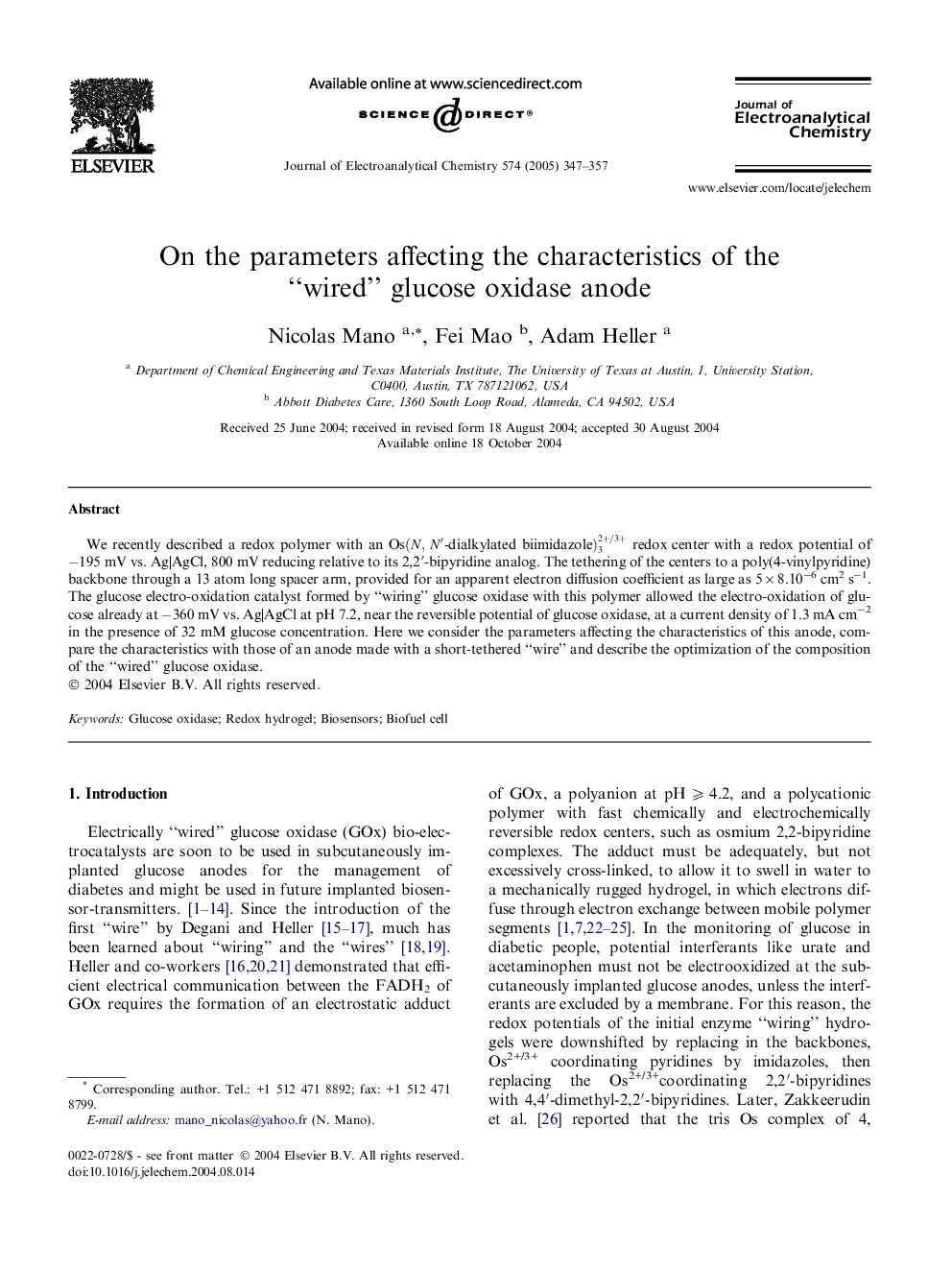| Article ID | Journal | Published Year | Pages | File Type |
|---|---|---|---|---|
| 10276066 | Journal of Electroanalytical Chemistry | 2005 | 11 Pages |
Abstract
We recently described a redox polymer with an Os(N,Nâ²-dialkylatedbiimidazole)32+/3+ redox center with a redox potential of â195 mV vs. Ag|AgCl, 800 mV reducing relative to its 2,2â²-bipyridine analog. The tethering of the centers to a poly(4-vinylpyridine) backbone through a 13 atom long spacer arm, provided for an apparent electron diffusion coefficient as large as 5Â ÃÂ 8.10â6 cm2 sâ1. The glucose electro-oxidation catalyst formed by “wiring” glucose oxidase with this polymer allowed the electro-oxidation of glucose already at â360 mV vs. Ag|AgCl at pH 7.2, near the reversible potential of glucose oxidase, at a current density of 1.3 mA cmâ2 in the presence of 32 mM glucose concentration. Here we consider the parameters affecting the characteristics of this anode, compare the characteristics with those of an anode made with a short-tethered “wire” and describe the optimization of the composition of the “wired” glucose oxidase.
Related Topics
Physical Sciences and Engineering
Chemical Engineering
Chemical Engineering (General)
Authors
Nicolas Mano, Fei Mao, Adam Heller,
